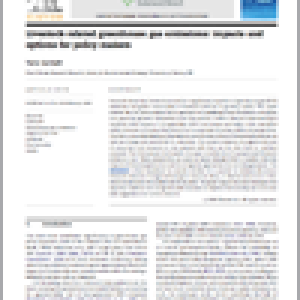(Published in Environmental Science and Policy.) Research shows that livestock account for a significant proportion of greenhouse gas (GHG) emissions and global consumption of livestock products is growing rapidly. This paper reviews the life cycle analysis (LCA) approach to quantifying these emissions and argues that, given the dynamic complexity of our food system, it offers a limited understanding of livestock’s GHG impacts. It is argued that LCA’s conclusions need rather to be considered within a broader conceptual framework that incorporates three key additional perspectives. The first is an understanding of the indirect second order effects of livestock production on land use change and associated CO2 emissions. The second compares the opportunity cost of using land and resources to rear animals with their use for other food or non-food purposes. The third perspective is need—the paper considers how far people need livestock products at all. These perspectives are used as lenses through which to explore both the impacts of livestock production and the mitigation approaches that are being proposed. The discussion is then broadened to consider whether it is possible to substantially reduce livestock emissions through technological measures alone, or whether reductions in livestock consumption will additionally be required. The paper argues for policy strategies that explicitly combine GHG mitigation with measures to improve food security and concludes with suggestions for further research.
Please note that there's a small error in the PDF. It says that 60% of Europe's soymeal is used to feed pigs and poultry but the figure should be 90%.




Post a new comment »